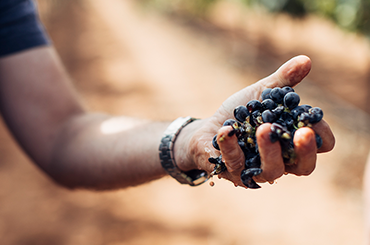The juggernaut of Australian shiraz will not be slowed. From the cool of Tasmania to the warm of the Barossa, the heart-throb variety of Australian red wine – grown on our lands for more than 175 years – isn’t just buoyant, it’s expanding. And what a remarkable fact that is.
“Australian shiraz is still far and away the number one choice for Australian red wine drinkers, with Barossa being the most recognisable by a fair margin, followed by McLaren Vale,” says Dan Murphy’s Peter Nixon. The proof? In the past 12 months, the retailer has added no less than 53 new shiraz wines to its range. Go you good thing.
“Shiraz is the king of varieties,” says Allister Ashmead of Elderton in the Barossa. “Consumers here and abroad still relate to it as the best Australia has to offer. The Barossa as a whole is [still] madly planting the variety for expected continued success. We would be really surprised to see Barossa shiraz hit a serious downward slope any time in the near future.”
From Grange to Clonakilla, Hill of Grace to Maurice O’Shea’s finest, shiraz has long since had many strings to its bow. But it’s adding a few more. It’s playing both country and western, and becoming even more versatile as a result. Think cool. Think spice. Think shiraz inspired as much or more by pinot noir than by, say, cabernet.
While shiraz’s famous rich, ripe, voluptuous fruit flavour – what Allister refers to as its “cuddliness” – is still as in-vogue as ever, cool-climate shiraz is now going bananas too. Variety is the spice of life, but spice is adding life to the shiraz variety.

Think cool. Think spice. Think shiraz inspired as much or more by pinot than by, say, cabernet.
“When I came down 10 years ago and saw we had shiraz in oak I laughed,” says Conor van der Reest, winemaker at Tasmania’s Moorilla Estate. “I looked at the wine we had in oak [shiraz from the 2007 vintage] and didn’t think much of it. I actually blended it away. Shortly after, I met a few local winemakers and mentioned that I didn’t think much of the shiraz I’d seen. That led to Nick Glaetzer [who would later win the Jimmy Watson Trophy with a Tasmanian shiraz] becoming abnormally interested in buying it from me,” Conor says.
“But over time I went through the rest of the wine in oak and I started questioning that perhaps it wasn’t the fruit that was the problem, rather winemaking and lack of care in the cellar.
“Nick was still pretty keen to buy my fruit so I told him I would pick and make it first, and if I didn’t like it I would give it to him. However, after vintage and then seeing the wine, I was pretty surprised to see what we had. It was pretty great, so I kept it. I liked it so much I took cuttings and doubled our surface area. At the time, I was only making 500 litres a year and the volumes were so small no one ever got to see it, so the new plantings in 2009 were really an effort to show off shiraz as a niche variety for us.
“I remember vintage in 2014, Nick and I both picked our shiraz on the same day and we worked together to crush each other’s fruit. It was cool to see on one truck and in the winery 95 per cent of Tasmania’s shiraz harvest. I don’t think that will happen again.”
Indeed you won’t. The cat is out of the bag, which is no surprise to Tim Kirk, the man behind the modern superstar of spice-studded Australian shiraz: Clonakilla Shiraz Viognier. “The best warmer climate, South Australian examples have always showed restraint along with fruit power,” Tim says. “I don’t doubt these styles will remain at the forefront of the Australian shiraz story, but there is a growing appreciation of the thrilling diversity of shiraz in Australia.”
It’s no small reason why shiraz shows no remote sign of being toppled from its position at the top of the charts. Indeed, if anything, appreciation of shiraz’s many charms is only on the rise. “Australian consumers are increasingly able to differentiate grape from wine style,” says Peter of Dan Murphy’s.
“There is a growing popularity of cooler climate shiraz styles, but the warmer regions are as popular as ever. And with evolution of style and winemaking philosophy, these regions are increasingly seen as stylistically nuanced rather than monosyllabic,” Peter says. “The terroir-driven Barossa, for example, is today more complex and diverse than at any other time in its 175-year history.”






